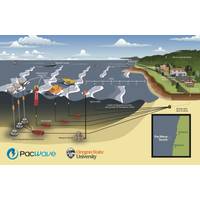
All Set for Cable Installation at US' First Utility-Scale Wave Energy Test Site
The installation of power and data cables at Oregon State University’s PacWave South, the first pre-permitted, utility-scale, grid-connected wave energy test site in the United States, is set to begin later in July.The cable installation marks an essential step to completing construction of a new wave energy testing facility off the Oregon Coast.The work includes installing four power and data cables ranging in length from about 10 to 13 continuous miles from a vault under the parking lot of Driftwood Beach State Park south of Newport out to the test site offshore.Louisiana-based subsea cable

MacArtney's GreenLink Tech Picked for First Grid-Linked Wave Energy Test Site in US
MacArtney's GreenLink terminations have been selected to connect innovative wave energy technologies to the grid at the PacWave South wave energy test site, being built offshore Oregon.The PacWave South, run by Oregon State University (OSU) in partnership with the U.S. Department of Energy and the State of Oregon, is being developed for testing and optimizing marine energy devices in open-ocean environments, driving the application of wave energy as a reliable power source.To ensure reliable grid connectivity from each berth to the shore-based facility, OSU and its selected prime marine contractor
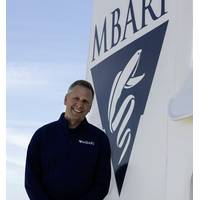
MBARI Names Kaya Johnson Director of Marine Operations
MBARI recently welcomed Kaya Johnson as its new director of marine operations, tasked with overseeing the institute’s seagoing assets, including three research vessels, a deep-sea cabled observatory and fleet of advanced underwater robots.Johnson comes to MBARI from Oregon State University (OSU), where he worked for the past six years. Johnson was port captain at OSU, then served as marine superintendent of ship operations. He managed operations for OSU’s fleet of three research vessels—Elakha, Oceanus (retired in November 2021) and Pacific Storm.Prior to his tenure at OSU, Johnson
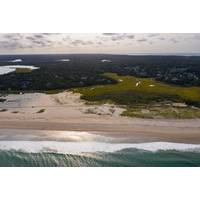
US Awards $6.7 Million for Sea Level Rise and Coastal Resilience Research
eight new projects are funded under the Inflation Reduction Act (IRA), part of President Biden’s Investing in America agenda, which will allow NOAA to help communities prepare for, adapt to and build resilience to changing climate conditions.New ESLR projects selected for funding include:Oregon State University and Pacific Northwest National Laboratory received $500,000 to evaluate tradeoffs between gray and green infrastructure approaches for flood risk reduction for two estuaries in the Pacific Northwest.(IRA-funded) Oregon State University received $500,000 to assess the environmental and economic
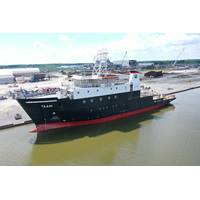
Bollinger Launches OSU's New Oceanographic Research Vessel
The first of three new oceanographic research vessels dedicated to advancing marine science along U.S. coasts was successfully launched Thursday.The ship, R/V Taani, is being constructed as part of a project, led by Oregon State University (OSU) and funded by the U.S. National Science Foundation (NSF), to provide scientists with valuable new tools to study critical issues such as rapidly changing ocean conditions and human impacts on the marine environment.The Regional Class Research Vessel project, supported by more than $390 million in grants, is charged with delivering three nearly identical ships
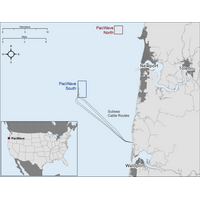
Nexans' Cables for US' First Grid-connected Wave Energy Test Facility
Nexans, a company specializing in making and installing power cables, has secured a contract for PacWave South, the United States' first grid-connected wave energy test facility.PacWave is a joint venture between the US Department of Energy, the State of Oregon, and Oregon State University and will facilitate the research of innovative renewable technologies.PacWave South consists of four berths that capture the energy generated by the movement of waves, and each berth will produce up to 5 MW of electricity.RT Casey LLC has selected Nexansto to provide the four medium voltage AC (MVAC) cables

Making Waves @ OSU: Energy Secretary, Senators, Governor tour Oregon State Wave Lab
U.S. Department of Energy Secretary Jennifer Granholm, Oregon U.S. Sens. Ron Wyden and Jeff Merkley and Oregon Gov. Kate Brown visited the O.H. Hinsdale Wave Research Laboratory at Oregon State University on Tuesday afternoon, with Granholm touting wave energy as “the elixir that we need” to address climate change by ending the nation’s reliance on fossil fuels.The visit was organized by OSU and the Pacific Marine Energy Center, a consortium of universities including Oregon State that is focused on advancing marine renewable energy.“We’ve all been in the ocean
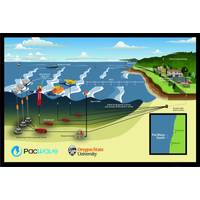
DOE Announces $25 Million for Wave Energy Research
usher in a new era of energy independence that makes the grid more resilient, curbs the climate crisis, and saves Americans money on their energy bills.”Obstacles to testing in the open ocean include permitting challenges and a scarcity of available test sites. In 2016, DOE partnered with Oregon State University to build the PacWave South test facility, which will be the nation’s first accredited, grid-connected, pre-permitted, open-water wave energy test facility. The selected projects are part of DOE’s Water Power Technologies Office (WPTO) “Advancing Wave Energy Technologies

'Doomsday’ Glacier Could Trigger Global Floods and Swallow Islands
, which restrains the glacier and makes it flow less quickly. But scientists have just confirmed that this ice shelf is becoming rapidly destabilised. The eastern ice shelf now has cracks criss-crossing its surface, and could collapse within ten years, according to Erin Pettit, a glaciologist at Oregon State University.This work supports research published in 2020 which also noted the development of cracks and crevasses on the Thwaites ice shelf. These indicate that it is being structurally weakened. This damage can have a reinforcing feedback effect because cracking and fracturing can promote further


 February 2025
February 2025





